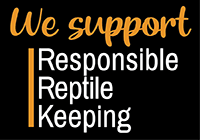How to create feeding stations and how to train your reptiles and amphibians to use them.

How to create feeding stations and how to train your reptiles and amphibians to use them.
Most reptiles and amphibians are association driven. This means different types of stimuli and schedules can play a role with your pets activity levels, behavior and breeding. When it comes to feeding, some reptiles can be trained to have an association with a particular object or feeding device to provide various degrees of reactions or feeding responses. Feeding dishes, tongs or openly hunting within the bioactive terrarium itself can be a possibility for all keepers.
Feeding stations are areas in the enclosure the reptile will commonly use for eating or hunting food. These can be areas where the floor plan is open-spaced for a bowl or a shallow dish that can hold the feeders for the reptiles, or an area where a feeding ledge or cup can be attached for the arboreal eaters. In this blog we will help you associate with your reptile through feeding and feeding stations as well as what benefits with neonatal or immuno compromised animals feeding stations can provide to the keeper and inhabitant.
Being opportunistic eaters, some reptiles are very food driven, often acting as if they have never been fed. This prey response is derived from the fact that they are still wild animals (even CB specimens in captivity) that still have their instincts and survival capabilities. You can feed this type of reptile in the areas of your choosing, because they'll eat pretty much anything any time, or a space where the reptile seems to gravitate towards in the enclosure. The association with keeper and food can also be established that can also help with different levels of bonding or partnership establishment. For the reptiles that are shy or may want to hunt on their own, using these areas will help the animal feel safe and for reptiles.
Knowing whether your animal is diurnal, crepuscular or nocturnal is one of the important things for knowing when the best time of day or night for them to see; and for the keeper to schedule feeding. Most reptiles see majority infrared and this means they see humans and prey as a temperature, in shades of red, orange and yellow; making anything moving a food item if they are brave enough or if they can fit it in their mouths. Utilizing a heavy bottomed bowl or an attached food cup to drop the moving, crawling feders into can help the reptile see them easier since they're not crawling around or digging in the substrate, not tipping the container over, therefore eating easier.
Diurnal- Active during the day - feed during the day
Cathemeral- Active any time of day or night - will eat any time
Crepuscular- Active during twilight - feed afternoon/dusk/twilight
Nocturnal- Active at night - at night or before you go to bed
Tong feeding is a great way to learn your reptile's feeding behavior and body language in a safe way for both of you. You'll learn the small quirks and head turns they make, the stances they take before striking, the way their face almost lights up when they see food or the way some launch themselves towards food. This practice also keeps your body parts out of harm's way from the more enthusiastic eaters.
Interracing with your reptile at times other than feeding are a good way for them to associate you with not always having food. We do not recommend holding them only during feeding times or moving them to feed as this can cause unnecessary stress for the reptile that can lead to significant health issues. (If the worry is loose substrate or impaction, make sure the husbandry requirements are spot on and that wont be an issue)
https://www.youtube.com/watch?v=vIHVJTWjZ0c
Sometimes the extra shy reptiles may be hungry and not want to eat in front of anyone and wait till you walk away. Feeding stations can help you observe the prey staying available, helping you to tell if the animal has eaten and how much, if you've offered more than one feeder. Utilizing the Dude’s Bug Grub you can also utilize various insect gut loaders to create small feeding stations within the terrarium itself. Placing a small ball of the Dude’s Bug Grub in a terrarium will cause the isopods, springtails and other types of insects (prey) to swarm the ball of Bug Grub. When dealing with neonatal or immunocompromised reptiles/amphibians this method can be extremely helpful for allowing them to not expend as much energy (ATP) in the forms of hunting as the food is right there, sitting still eating the available food. This have been a proven standard in the Dude’s showroom with his young dart frogs and geckos.
Alternatively, if feeding live insects fresh fruit or other means can be utilized as well to help with this acclimation process.
- Josh Halter










